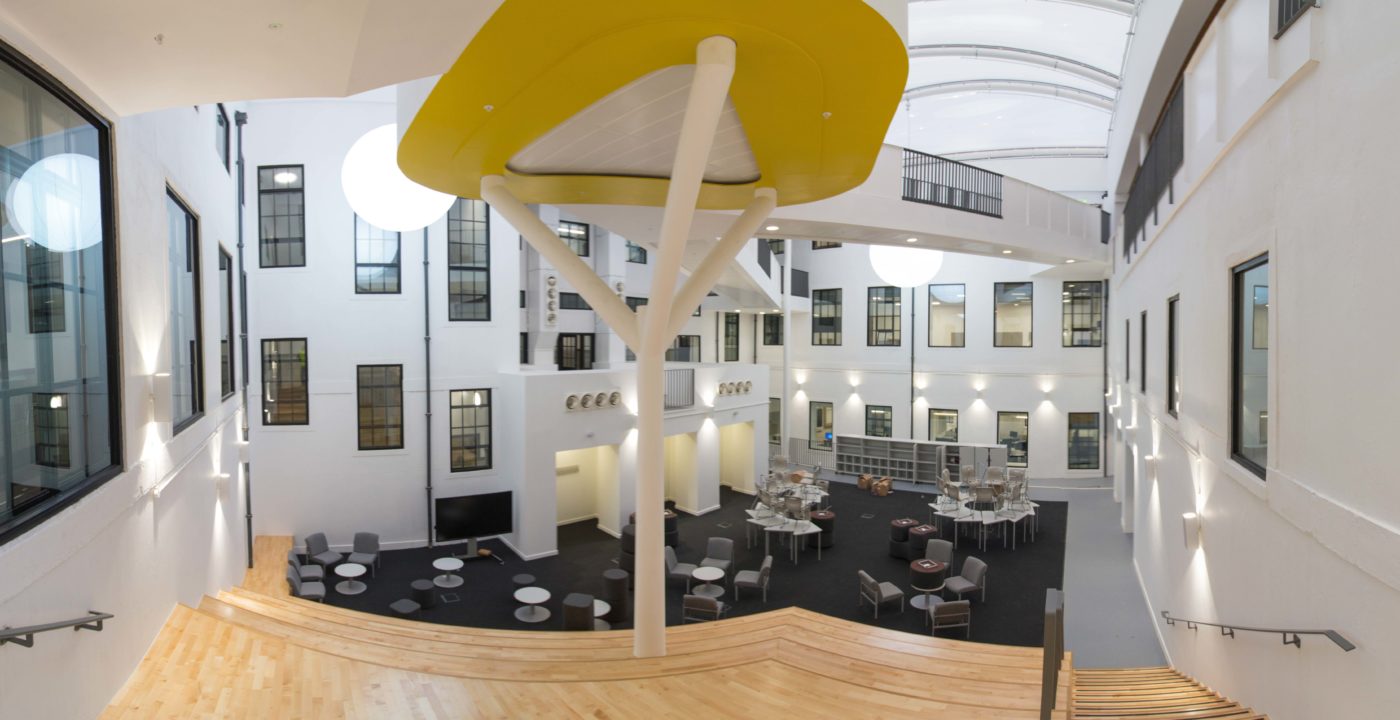Don’t take short cuts in retrofit
Whether you are upgrading existing fire glass or planning to make an old glazed system fire-safe, refurbishment and retrofit projects can present a real danger when it comes to the integrity of a building’s passive fire protection. Here, Steve Goodburn, Business Development Director at Pyroguard, explores the factors to consider when replacing glass in an old system and the importance of taking a system approach when it comes to fire glass and the retrofit market.

As the construction industry and economy starts to recover following the Coronavirus outbreak, retrofit projects are predicted to become a growing market for glazing installers. With fewer new-development projects taking place, budgets and attention may instead be focused on refurbishing and improving our existing buildings. For example, this could involve replacing traditional wired fire glass with modern, more aesthetically pleasing fire glass, improving a building’s fire protection by replacing old glazing with fire safety glass, or – for older building’s – upgrading single glazing to double glazing, assisting with both improved energy efficiency and fire safety.
However, before approaching a project such as these, there are various factors to be aware of – some of which are unique to the retrofit market.
There remains a common misconception within the construction, glazing and fire safety industries that fire glass itself, as an isolated product, is enough to deliver protection against fire. This could result in old glass being removed from an existing window frame and new fire safety glass simply inserted in its place, with the view that a fire-resistant glazed system has been created. This approach is entirely incorrect and could have potentially devastating consequences.
It is first important to recognise that fire safety glass is not a stand-alone product. Instead, it is just one element in a fire protection system, performing in conjunction with other components to deliver the required level of fire safety.
A good example of this is fire doors. According to recent figures, a shocking 76% of fire doors inspected in 2019 by the Fire Door Inspection Scheme (FDIS) were deemed as unfit for purpose. This could be due to numerous reasons, such as the door being installed incorrectly, issues around smoke sealing and intumescent strips or poorly adjusted door closers. There are multiple factors that make up its fire protection, going beyond just the door itself.
In Dame Judith Hackitt’s review into UK Building Regulations and Fire Safety, she talked about the importance of taking a system approach to the specification and testing of building products; to consider and evaluate how products will perform together, once in-situ. With this in mind, it is vital that fire safety glass is considered, and tested, as part of a total system, including the glass, frame, intumescent strips and any other components.
So, what does this mean in practical terms? You may be working on a retrofit project where you are replacing ordinary window glazing with fire safety glass and the existing frames are standard aluminium. Even if you were to replace the old glass with fire safety glass, the frame is not likely to be a fire rated system. In the case of a non-fire rated aluminium frame, without cooling inserts, the aluminium metal is likely to melt in the event of a fire, rendering the glazing’s fire protection value useless. Likewise, if you are working with simple steel frames that haven’t been fire-rated, PVC frames or timber frames, where the wood density is too low or the sections too narrow, the result could be equally devastating.
Regardless of the classification of fire safety glass being installed, it will only perform as intended if it is correctly installed within a suitable frame. It is because of this that test evidence – as a complete system, including the frame – is so vital, for only then can you be assured of its performance.
On any retrofit project, you therefore need to first identify exactly what type of frame is already in-situ in the building and take this information to your fire glass manufacturer or supplier, who will be able to offer specification and technical advice.
Existing (or new) fire test evidence can be used to evaluate the current frame, its suitability and ensure the correct fire glass product is installed. Alternatively, depending on the existing frame, it may be safer and more cost-effective to replace both the glass and the frame with a fully fire tested and approved system. Whichever approach is taken, you can be confident that a fire-safe system will be constructed, one that will perform as intended in the unfortunate event of a fire.
The refurbishment and expansion of Marr College, in Troon, Scotland is just one example. Due to the building’s listed status, it was important to ensure that its architecture and heritage was preserved and respected, while simultaneously making the building more suited to modern demands and ensuring the necessary safety requirements of today’s building regulations were met. With the help of Pyroguard’s technical team and the use of existing test evidence, a fire-safety glazing system was able to be created using the original timber window frames in-situ and the installation of Pyroguard toughened glass and the appropriate glazing seals.
While retrofit projects may, on the surface, seem straight forward, approached incorrectly and the consequences could be severe. It is vital that you consider the fire-safety glazing as a total system, as opposed to the glass product in isolation. With fire testing and test evidence being central to ensuring a fire safe glazing system is installed, seek out technical and specification advice from your fire glass supplier first.
For more information, please contact us.
